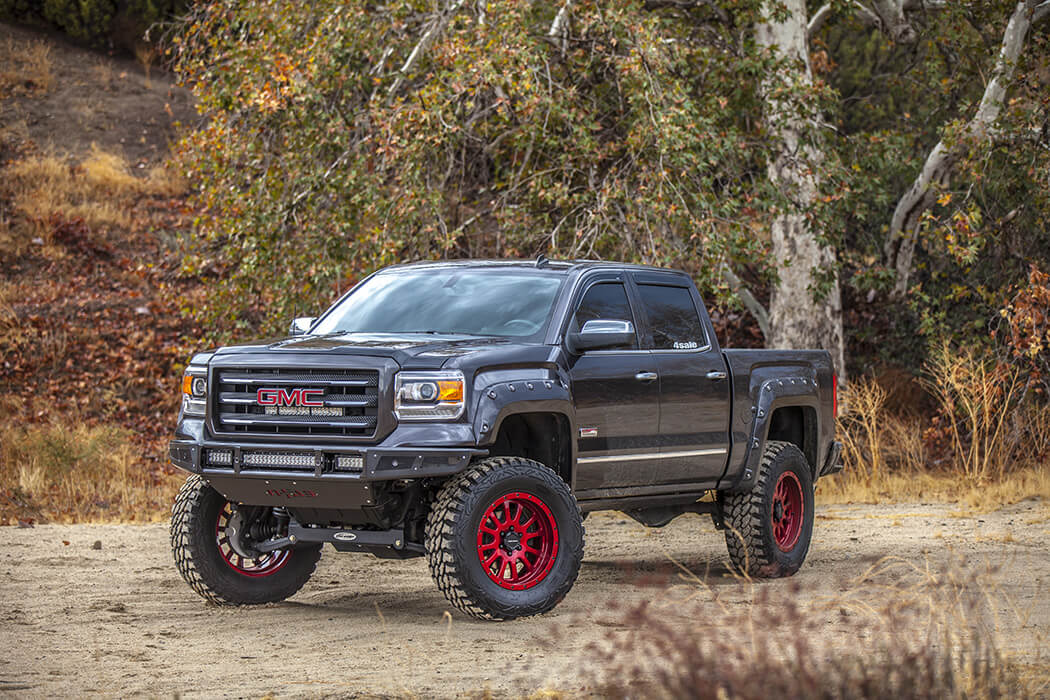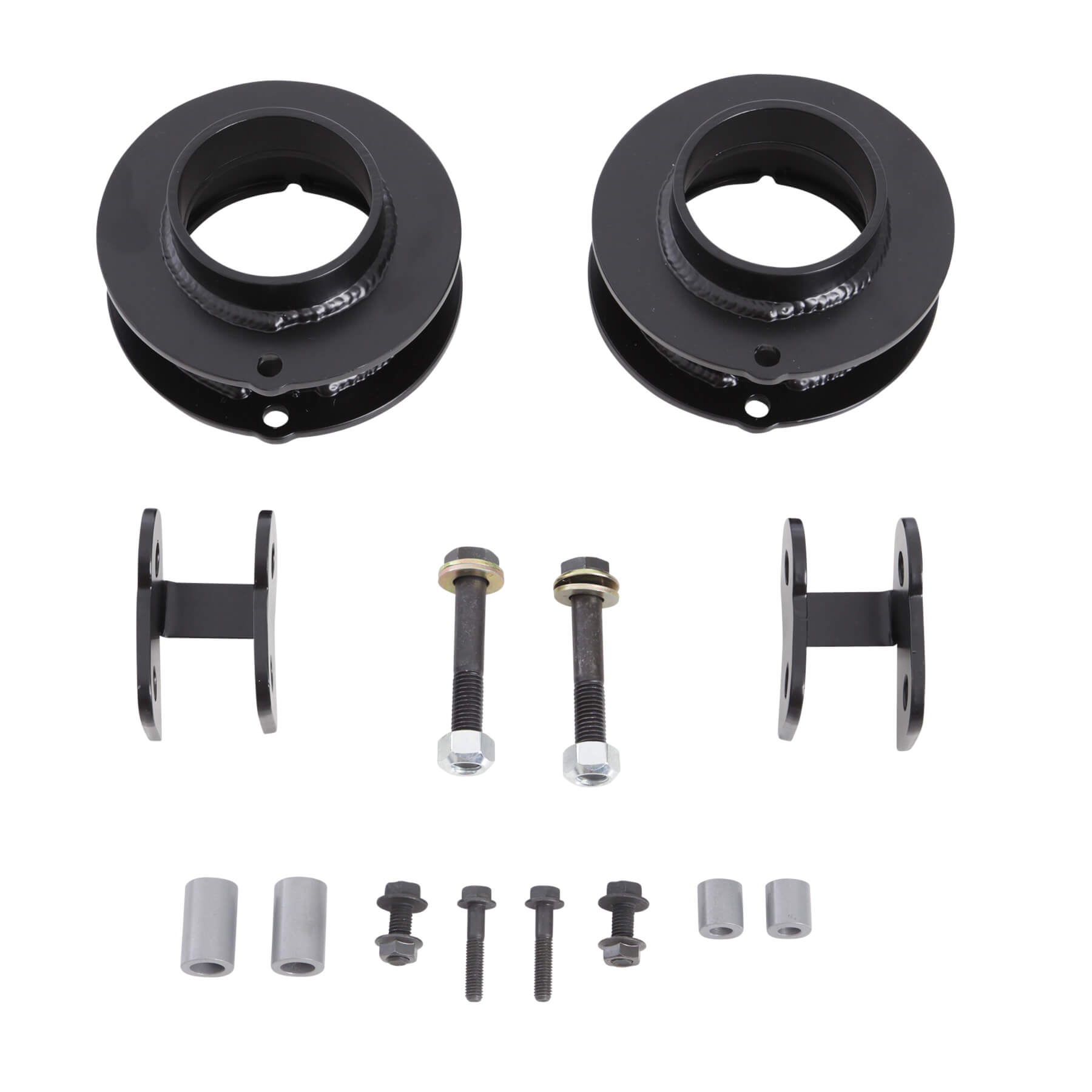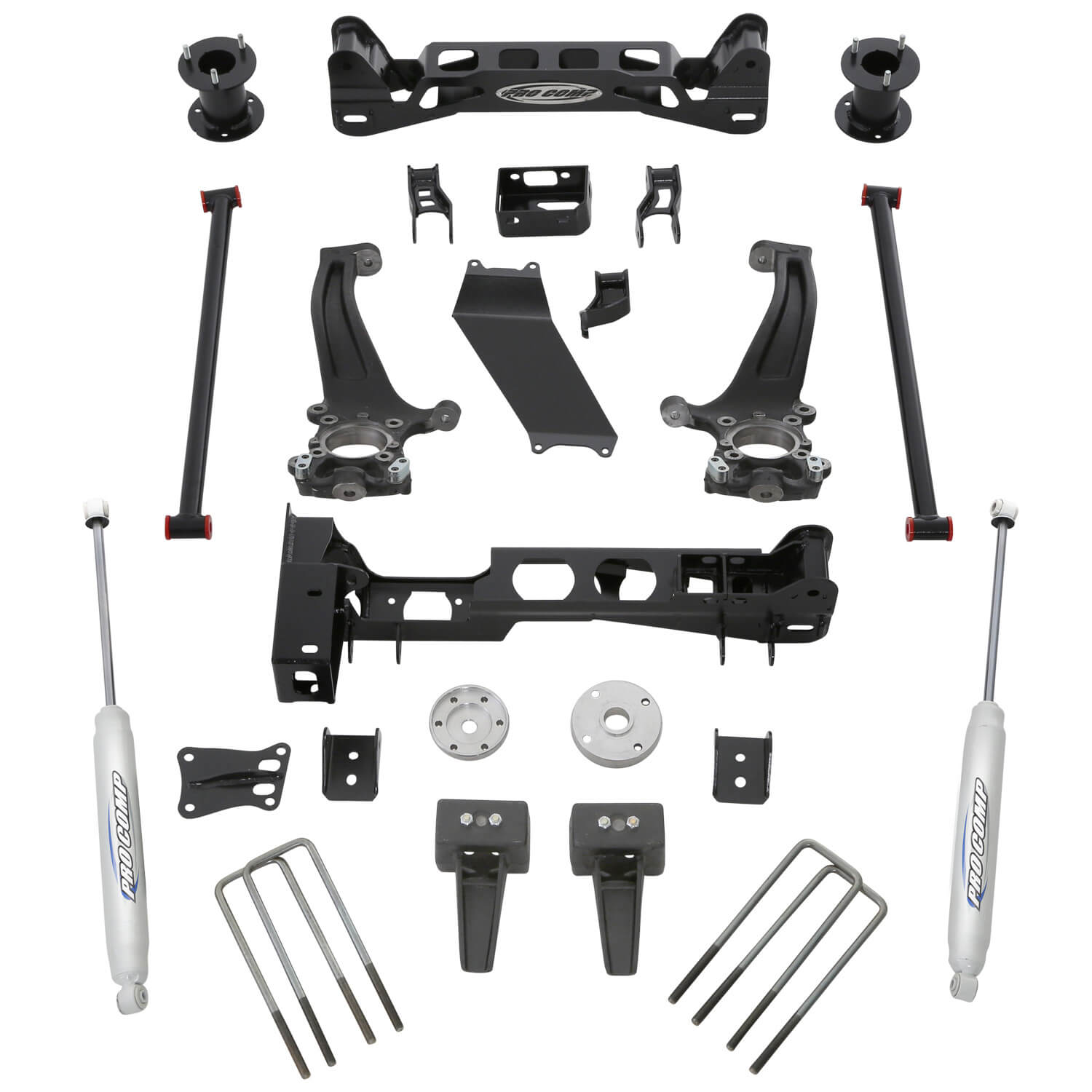
Regardless of whether you want to conquer the Rubicon or the mall parking lot, there is a lot to consider before lifting your ride. After all, you are significantly modifying your vehicle. Anytime you make alterations that large, it is a bit like opening up Pandora’s Box. Not only can a lot of things go wrong, but a single modification can lead to lots of others being needed. It can all quickly spiral out of control if you are not careful.
So what do you need to know to keep your lifting experience from descending into a hot mess? Thankfully, we have taken the liberty of compiling a list of what you should consider before installing a new suspension system. Some items on this list might seem like common sense, while others might be surprising. Regardless, they are all worth considering. Like anything, the more research and knowledge you possess before you jump into something the better. If you are about to lift your vehicle read on.

How Do You Actually Use Your Ride?
Surprisingly, this is something that many people actually don’t think about before lifting their vehicle. How you actually use your rig should be a major consideration before slapping on any lift. And, we are not talking about how you dream of using your truck, but how you actually use it day in and day out. For example, if you commute to work 50 miles each way, then maybe 44-inch tires and a 12-inch lift aren’t a great idea. If you tow a lot of weight, you might not want a taller center of gravity and heavy 40-inch tires. And, if you are throwing a dirt bike into the back of your truck every weekend, maybe you don’t want to have to use a crane to do it.
The list can go on and on, but the point is to build a vehicle for how you actually use it the majority of the time. We don’t want to be buzzkills, but just trust us on this one. You will be happier in the long run instead of wondering why you decided to make your truck useless. Build it for how you are going to use.
How Much Is This Going To Cost?
Budget is going to play a significant role in any decision you make. You can dream of 40-inch tires all you want, but if you don’t have the money for them or the suspension needed to clear them, then all that dreaming is worthless. Sorry to be harsh, but that is just the way the cookie crumbles. Now, we are not saying don’t buy that lift kit you always wanted. After all, you only live once and should definitely go after your dreams. However, we are saying be realistic with what you can afford and build appropriately.
How much everything is going to cost exactly is impossible for us to say. It depends upon what type of vehicle you have, so it is up to you to do the research. Generally, though, the bigger the lift you want, the more expensive it gets. Smaller leveling kits that keep the stock shocks can cost as little as a couple hundred dollars. A quality set of coilovers easily costs at least $1,000. And larger drop-down style lifts are usually $1,500 and up. Remember to add tires and wheels to those costs as well as labor for installation if you don’t want to do it yourself. Yes, it can all add up rather quickly and put a serious dent in your wallet.
The Hidden Costs
When you are comparing lift kits, make sure it is apples to apples. We have seen lots of people opt for a lift kit because it was cheaper only to realize that it didn’t include some necessary items like new brake lines, U-bolts, etc. Make sure that the lift kits you are comparing are actually the same otherwise you might wind up incurring some extra “hidden” costs you didn’t plan for.
Besides the actual suspension system, you should check what else your vehicle is going to need. Some lifts kits might require new driveshafts, exhaust modifications, steel braided brake lines, carrier barrier drop brackets, axle shims, or other items you didn’t realize you needed. These can add to the costs as well so make sure to research out what you need before you buy and talk to your local 4WP store.

A basic leveling kit that keeps your factory shocks is always going to be your cheapest option. They usually offer a couple inches of lift and keep the factory ride on the pavement. However, stock shocks are usually pretty mushy once you hit the dirt.

A bracket or drop down lift is usually the most expensive option and most time-consuming to install. But they are really the only option for those that want to run a big tire. Most provide around 6 inches of lift and clear 35-inch tires on half-ton trucks.
What Type Of Lift
What type of lift you run is going to be dictated by how much lift you want and also how big your budget is. The cheapest option is a basic level lift that keeps the factory shocks. They make the smallest dent in your wallet, but also supply the least amount of lift (usually around 1-2 inches). The plus is that using the stock shocks and springs retains a plush factory ride on the highway. However, that plus can turn into a con in the dirt as most OEM shocks are on the soft side so the suspension will quickly blow through its travel.
Next up in price is a quality set of coilovers. Paired with upper control arms, they usually provide 2-3 inches of lift. What is way more important than the amount of lift they provide is the big increase in control off-road they offer. With bigger shock bodies, coilovers have a lot more fluid so fade isn’t an issue. Those bigger bodies also allow for larger pistons for better compression and rebound damping control. They might not clear big tires, but the result is a suspension that works a lot better off road compared to the other options.
If you want to run more lift than 3 inches, your only option is going to be a drop down lift. These lift kits usually drop down the lower cross members and then use a longer spindle to connect to the factory A-arms. Often, they offer around 6 inches of lift and clear 35-inch tires (obviously this depends upon the vehicle). They are the only game in town for IFS vehicles that are looking to run larger tires and lifts. Most of them do not increase wheel travel at all. However, many have shock upgrade options to improve the ride off-road.

Lots of people focus on the lift kit, but then skimp on the shocks. If you are just cruising down the highway the basic shocks will do. Upgraded shocks are always a good idea for anyone planing to spend time in the dirt.

Don’t ruin your new suspension with the wrong tire for your application. Mud-terrains look awesome, but if you want minimal road noise, lots of tread life, and better performance on snowy roads then an all-terrain will be a better option.
Get The Right Shocks
Speaking of shocks, they play a critical role in the performance of your truck in the dirt. And if your paved roads are anything like the crappy ones around here, they can even help on the pavement. Most suspension systems will come with a basic set of shocks. If you are just planning on cruising on the highway, they will probably suffice. But if you plan actually to get your rig dirty, you should be investigating any optional shocks that are available. Shocks with larger bodies will offer better cooling and more control off-road.
Get The Right Tires
You can have the best suspension around, but if you don’t get the right tires then you’re going to be miserable. And, when we say the “right” tire, we aren’t talking about a particular brand either. What we are saying is to get the right tire for how you actually use your vehicle. If you commute daily and put lots of highway miles on your vehicle, a super-aggressive mud-terrain tire probably isn’t your best bet. And, if you wheel hard every weekend, then a mild all-terrain just isn’t going to cut it. Pick the tire that is going to work for you and not just one that looks cool. We have seen people select a tire by looks alone only to go slowly insane from its non-stop droning on the highway. It is sad and not something we want to happen to you.
Gas Mileage
One question we often get is how much will a lift and bigger tires affect gas mileage? A lot of that depends upon how big of a tire and how large of a lift you put on. The bigger you go, the more your gas mileage will drop. There is just no way to cheat the laws of aerodynamics and physics. Pushing a larger profile through the air takes its toll and increases drag. And, your drivetrain having to spin heavier tires takes an even bigger toll. If you are concerned about gas mileage, our advice is to stick to a smaller lift and a tire that is at the most a couple inches bigger than stock. Even then, your gas mileage will take a hit, but it will at least be minimized. Don’t complain to us about crappy gas mileage when you opted for a 6-inch lift and 37s.

One of the biggest mistakes we see when lifting a truck is not gearing down. Many think they can skip this step and just live with it or add horsepower. Trust us, this is not going to work. Swapping the original gears out for the right ring and pinion ratio is the best modification you can do after going up in tire size.
Get The Gears
One of the best ways to get some of that lost gas mileage back is to re-gear your vehicle. Bigger tires have a larger circumference and take longer to go the same distance as your original tires. The effect is the same as putting in higher (numerically lower) ring and pinion gears. Your engine rpm will be lower at all speeds compared to the stock tires and your speedometer will read slower.
While a lower rpm might sound ideal for fuel economy, it is not. The vast majority of newer vehicles come with a ring and pinion ratio that is carefully chosen by the OEM to maximize both performance and fuel economy. When you effectively alter that ratio with larger tires, you will find that you need more throttle to maintain a certain rpm. Often, a vehicle will feel sluggish and you will need to get into the throttle more thus tanking your vehicle economy. It is also harder on the drivetrain as the transmission can be left hunting for the right gear. The speedometer being off can also cause issues with any system (traction control, shifting maps, stability control, etc.) that relies on a correct speedometer reading.
The only solution to this is to install lower (numerically higher) ring and pinion gears. Don’t fall into the trap of thinking that you can merely add horsepower somehow for a quick fix. Save your money for gears instead as your vehicle needs to operate at the correct rpm to be happy. Horsepower is just a band-aid and not a real solution. Anytime you go with a tire that is larger than two inches over stock, you should count on having to regear.
Make Sure Everything Works
Besides checking that the speedometer is accurate, you should also make sure that all of a vehicle’s systems will work after installing a lift. Modern vehicles are becoming increasingly complicated and altering them can affect things like stability control. While these systems have been around for a while, they are now more advanced than ever. It is important to know that they will work once your vehicle is lifted with bigger tires. Some companies, like Pro Comp, go through the process of making sure their lift kits are FMVSS 126 complaint so that the electronic stability control will still work. If you have a modern truck, you might as well be able to retain all of its technology.



2